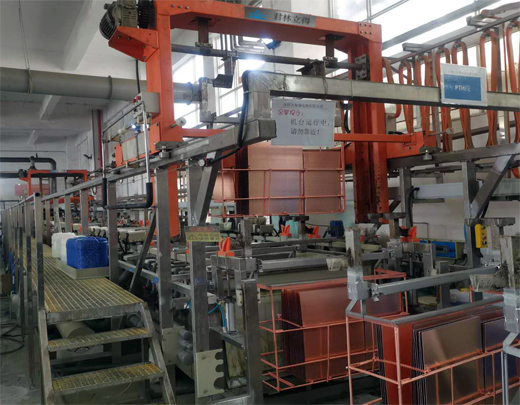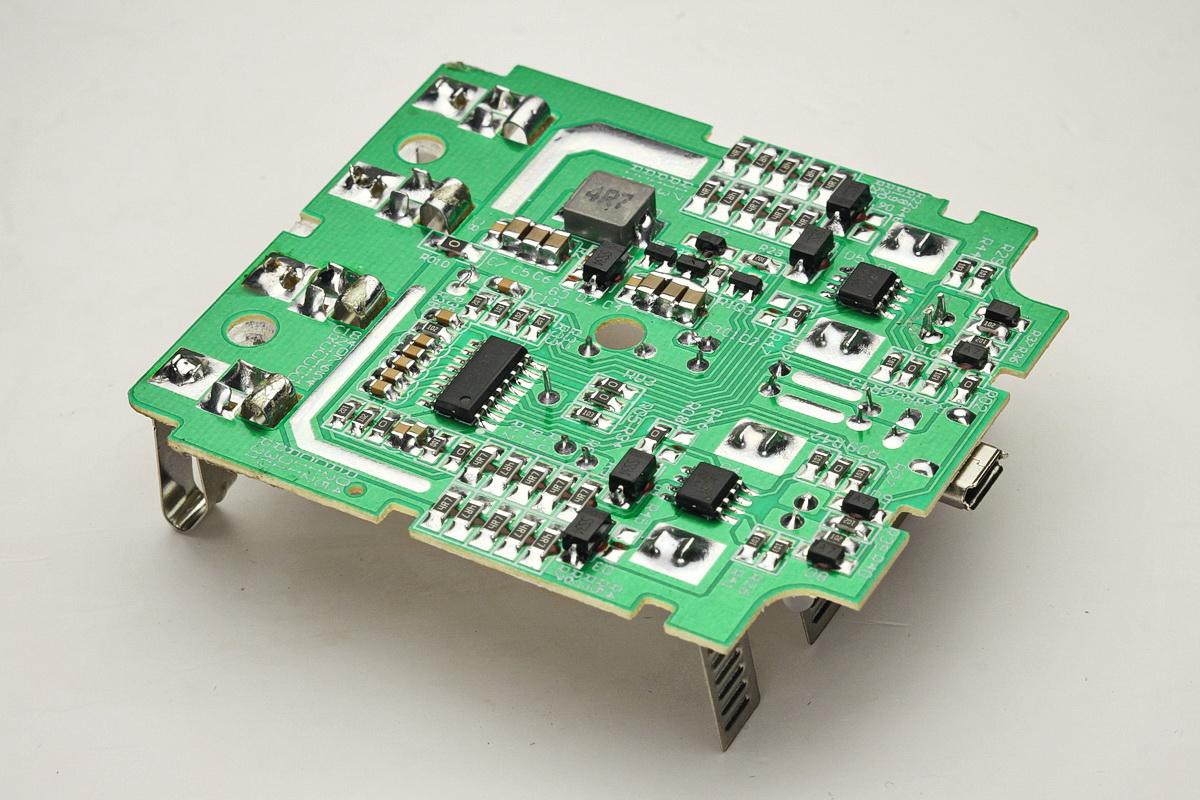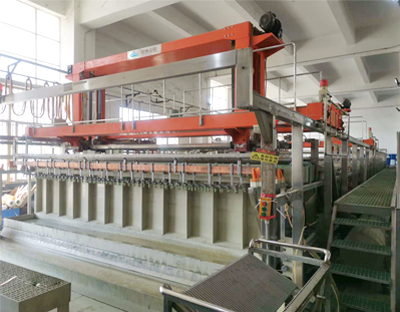Electroplating is very important in the PCB production process. What’s the difference between “rack plating” and “barrel plating” ?
1. Different definitions:
1. The rack plating production line is suitable for copper, nickel, chromium, zinc, aluminum oxide, phosphating, plastic electroplating and other advanced process requirements. The whole line has reasonable structure, beautiful appearance, convenient operation, low noise and easy maintenance. The gantry crane rollers are made of polyurethane rubber, which can run smoothly and without noise. All procedures in the whole line can realize process operation, frequency conversion adjustment, soft rise and soft fall. It is suitable for plating tanks of various sizes and is an automatic line with a wide range of adaptability.
2. Barrel plating uses high-quality materials, reasonable structure, beautiful appearance, safe operation, low noise, easy maintenance, suitable for mass production of various small parts and various plating needs. High production efficiency, uniform coating and good quality.
Two, the process is different:
1. Rack plating is a process in which the workpiece is clamped on the hanger, suitable for large parts, the number of products that can be plated in each batch is small, and the thickness of the plating layer is more than 10μm.
2. Barrel plating is a process in which the workpiece is loaded into the drum, suitable for small parts, with a large quantity per drum, and the coating thickness is less than 10μm.
1. Hang plating:
Rack plating is a process in which the workpiece is clamped on the hanger, suitable for large parts, the number of products that can be plated in each batch is small, and the thickness of the plating layer is more than 10μm.

2.Barrel plating:
Scientifically dividing the types of barrel plating should be based on the shape and axial direction of the roller used in barrel plating. According to the difference between these two aspects of the drum, the common barrel plating methods in electroplating production are divided into three categories: horizontal barrel plating, inclined barrel plating and vibration plating.
3. Overview of barrel plating:
Barrel plating is suitable for the electroplating of small parts that cannot or should not be mounted due to factors such as shape and size. Compared with the early plating of small parts using rack plating or basket plating, it saves labor and improves labor production efficiency. And the surface quality of the plated parts is also greatly improved. Therefore, the invention and application of barrel plating undoubtedly have a very positive significance in the field of electroplating of small parts. Barrel plating has been used in industry as early as the 1920s. The domestic barrel plating first appeared in Shanghai in the mid to late 1950s. The mechanized continuous barrel plating equipment began to be used around the 1960s, but the equipment at that time could only be controlled manually, while the large-scale automatic barrel plating production line probably began in the 1990s. It has been widely used since the beginning of the decade. At present, the output of barrel plating accounts for about 50% of the entire electroplating process, and involves dozens of plating species such as zinc plating, copper, nickel, tin, chromium, gold, silver and alloys. Barrel plating has become a very common electroplating processing method that is almost on par with rack plating.
Barrel plating is carried out in the drum.
The biggest difference between barrel plating and small parts rack plating is that it uses a roller, which is a holding device that carries the small parts to be plated during the continuous tumbling process. The typical roller is in the shape of a hexagonal prism and placed horizontally. One side of the wall of the drum is open, and a certain number of small parts are loaded into the drum from the opening during electroplating, and then the drum door is covered to close the opening. There are many small holes on the wall of the drum. The conduction of the current between the parts and the anode during electroplating, the renewal of the solution inside and outside the cylinder, and the discharge of exhaust gas all need to pass through these small holes. The cathode conductive devices in the drum are passed through the central shaft holes on both sides of the drum through copper wires or rods, and then are respectively fixed on the conductive feet of the left and right wall panels of the drum. The parts are naturally connected to the cathode conductive device in the drum by their own gravity. Barrel plating of small parts is carried out in such a device. Many factors such as the structure, size, size, speed, conduction mode, and opening rate of the drum are related to the production efficiency of barrel plating and the quality of the coating. Therefore, the drum is one of the focal points of the entire barrel plating technology research.
Barrel plating is carried out in the process of continuous tumbling of small parts.
During barrel plating, the small parts are not stationary in the drum, but must roll continuously with the rotation of the drum. This kind of tumbling is specific to a certain part: it is buried inside the entire stacked part for a while, and then turned to the outer surface for a while. This is repeated until the end of the entire barrel plating process.






 Dec. 18, 2019
Dec. 18, 2019 



